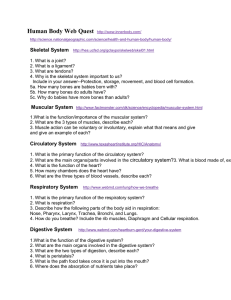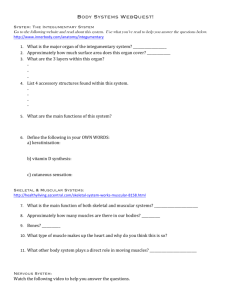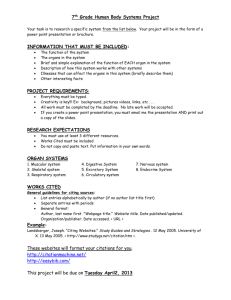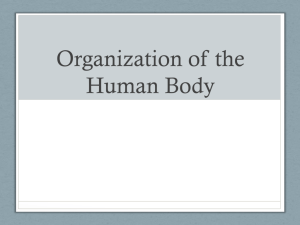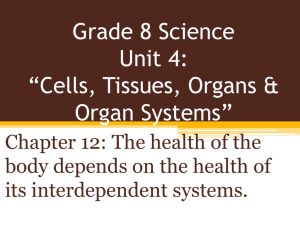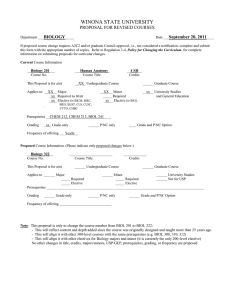Descriptive Histology
advertisement
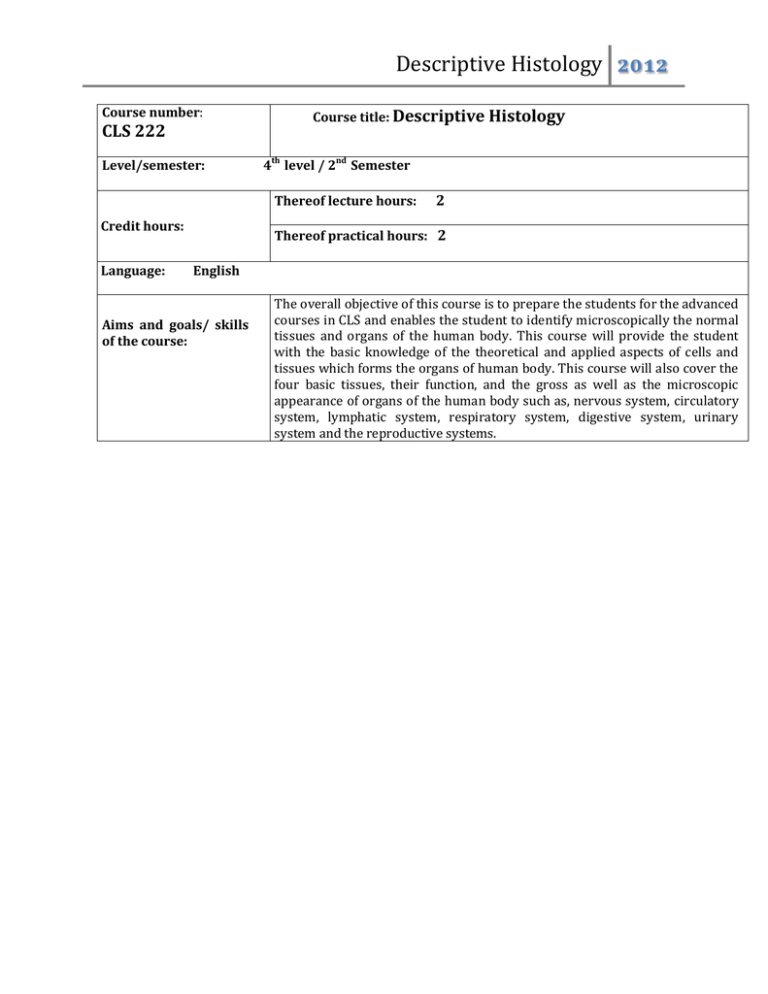
Descriptive Histology 2012 Course number: CLS 222 Level/semester: Course title: Descriptive Histology 4th level / 2nd Semester Thereof lecture hours: Credit hours: Language: 2 Thereof practical hours: 2 English Aims and goals/ skills of the course: The overall objective of this course is to prepare the students for the advanced courses in CLS and enables the student to identify microscopically the normal tissues and organs of the human body. This course will provide the student with the basic knowledge of the theoretical and applied aspects of cells and tissues which forms the organs of human body. This course will also cover the four basic tissues, their function, and the gross as well as the microscopic appearance of organs of the human body such as, nervous system, circulatory system, lymphatic system, respiratory system, digestive system, urinary system and the reproductive systems. Descriptive Histology 2012 Weeks 1. 2-3. 4. 5. 6. 7. Content of the course: 8. 9. 10. 11-12. 13. 14. Examination: Course Leader Subjects Introduction Epithelial tissue:(definition, features, classification & function) Connective tissue (definition, features, cells and fibers) Connective tissue types: (loose, dense, reticular, adipose and elastic) Supportive connective tissue, Cartilage (general features, functions and types: hyaline, elastic, white fibrocartilage), Bone (general features, functions, types: spongy, compact and development) Muscular tissue (general features and types) Nervous tissue, Central nervous system (parts), types and structure of neuron Peripheral nervous system: Types and structure of nerves and ganglia, Nerve endings, Synapse ,Neuroglia Circulatory system, Blood circulation, Heart structure and function Arteries and veins (types, structure and comparison of both) Comparison between capillaries and sinisoids Lymph circulatory system: lymph vessels Lymphatic organs, Lymph nodes: structure and function Spleen, thymus, tonsils Respiratory system, Upper: nose, nasopharynx, larynx, Lower: trachea, bronchus, bronchiole , Structure of the lung, Pleura Digestive system, Oral cavity: lip, tongue (papillae and its function) Digestive tube: general structure of esophagus, stomach, small and large intestine, appendix Digestive glands: Salivary gland, liver, gall bladder and pancreas Urinary system, Parts, function and structure of kidney and urinary passage (ureter, urinary bladder and urethra in males and females) written & practical examination First Mid Term Examination: 15 Second Mid Term Examination: 15 Student activities, sharing, Quiz 10 Final Practical Examination: 20 Final Theoretical Examination: 40 Dr Nami Aljehani Office number: 2327 -2nd floor Email: naljehani@ksu.edu.sa

